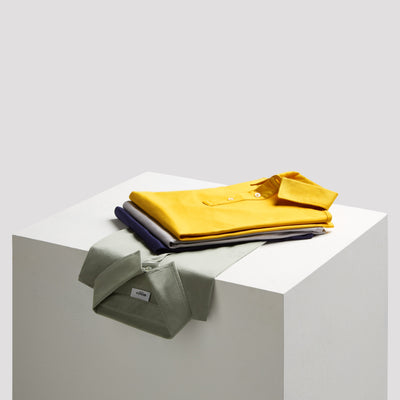The Best Polo Shirt Brand for Men? [2024 Update]
The polo shirt has been a year-round menswear favourite for over 100 years. But how do you choose the best polo for your money? We selected a polo shirt from five well-known brands including Sunspel, Ralph Lauren, Niccolò P., and Lacoste to compare each polo in order to answer the question: what makes a great polo shirt? To ensure a fair comparison we chose a single, main range navy polo shirt from each brand and compared them on several different measures including the type of cotton used, buttons, stitching of the garment and collar details. We then set the results out in the table below to enable you to draw your own conclusions.
Guide to Buying a Polo Shirt - The Do's and Don'ts
When shopping for a new polo shirt, the fit of the polo is the most important thing to get right: it should be comfortable around the shoulders, arms and torso, neither too slim nor overly loose. The sleeves should reach to mid-bicep to show just the right amount of arm. We prefer a front placket which has been 'set-on' meaning that it is fashioned from an entirely separate piece of fabric (rather than simply cut into the main body of the shirt) and is considerably more complicated to manufacture - it gives the front of the polo a defined appearance and is the hallmark of real craftsmanship. To finish, the classic placket has no more than three buttons.
For flexibility, we recommend avoiding overly 'sporty' polo shirts unless that is the sole purpose of buying it. As such, select a polo with a moderate hem split (no more than an inch) with no extended or so-called tennis tail.
For flexibility, we recommend avoiding overly 'sporty' polo shirts unless that is the sole purpose of buying it. As such, select a polo with a moderate hem split (no more than an inch) with no extended or so-called tennis tail.
A note on buttons: a high quality mother-of-pearl button custom dyed to match a Pantone colour can cost around 50 pence or £2 per polo shirt (three buttons on the placket and one spare on the care label). Compare this with plastic buttons which typically cost less than 5 pence per piece. There are also imitation mother-of-pearl buttons which are better than a plastic button but are no substitute for the real thing.

Make quality: we can't stress enough how important the make quality of a polo shirt is. We have inspected sample products from many factories around the world and there is often a huge variance in how well the garments are put together. The approach to quality control will differ depending on what other brands a particular factory produce for. If the factory typically makes for 'fast fashion', there simply isn't the time or inclination to ensure to a close enough extent that, for example, each size in any particular style precisely matches the others. For polo shirts, we prefer brands which rely on suppliers which are based in Europe. Countries such as Italy and Portugal have a long history and expertise of working with jersey fabric.

Lastly, the question of whether you brand which adds a logo or not. This is a matter of individual preference but we recommend that if you do choose a polo shirt with a logo that the logo itself is relatively small. Remember that the presence of a logo on your clothes is rarely there for your benefit!
On all measures then Niccolò P. polo shirts stand apart as using the best available materials and make techniques compared with more established brands. As a true direct-to-customer business (and polo shirt specialist), Niccolò P. does not have to bear the significant costs of a physical store network and associated management expense. For this reason, the brand is compromise-free and uses - demonstrably - the very best fabrics in the world while still pricing significantly below equivalent traditional retail (a polo shirt with comparable features from the other brands featured here would cost in the region of £130).





